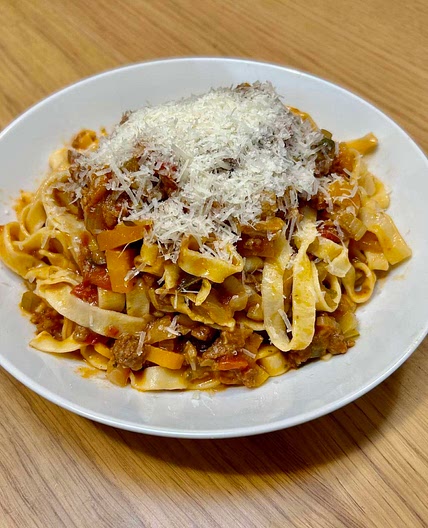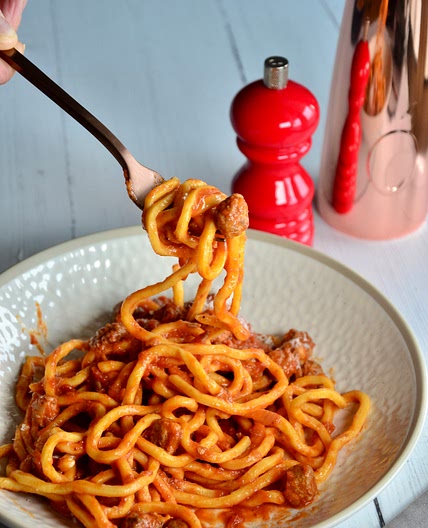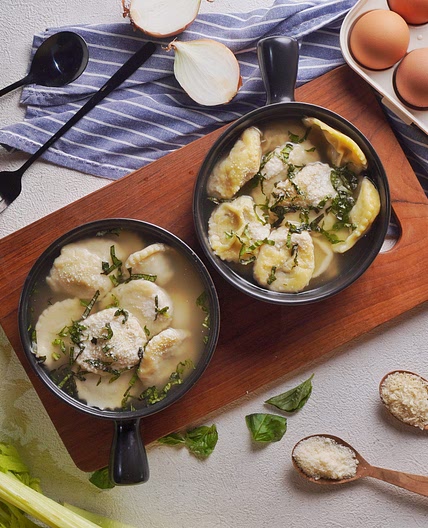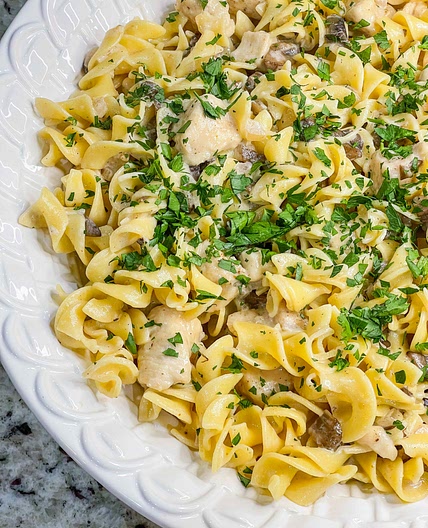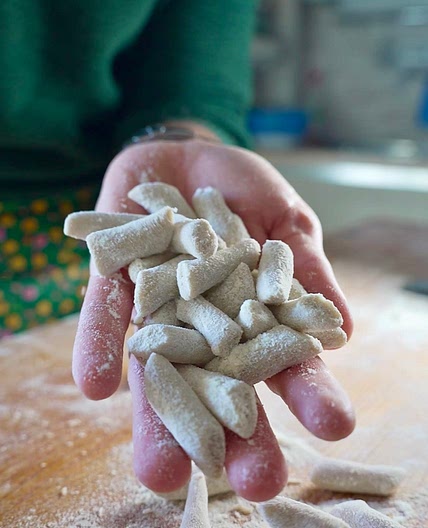By Angelique
Spaghetti all’Assassina - killer spaghetti
8 steps
Cook:20min
Spaghetti all’assassina from Bari, Puglia. Also known as spaghetti brucati Barese (burnt spaghetti from Bari). Cooked by the Puglia Guys using an authentic assassina recipe.
Updated at: Mon, 30 Sep 2024 11:02:40 GMT
Nutrition balance score
Uh-oh! We're unable to calculate nutrition for this recipe because some ingredients aren't recognized.
Ingredients
4 servings
Instructions
Step 1
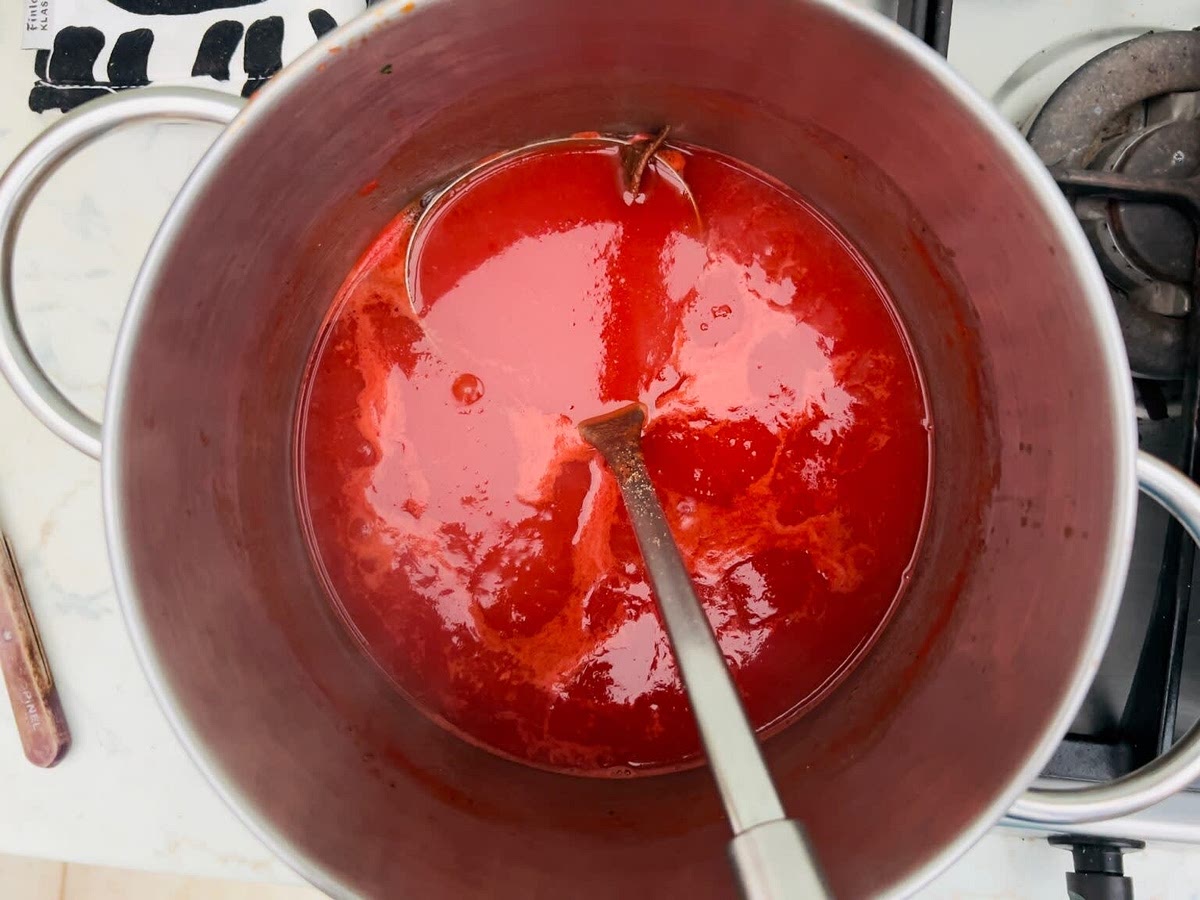
Prepare a broth made with water (1 litre) and the tomato concentrate (reserving a couple of squeezes from the tube of concentrate for the pan). Season to taste – we don’t add salt to the spaghetti, so be sure to season the tomato broth well – and bring to a boil. The sauce “must be bright red and tasty, but still a broth.”
Step 2
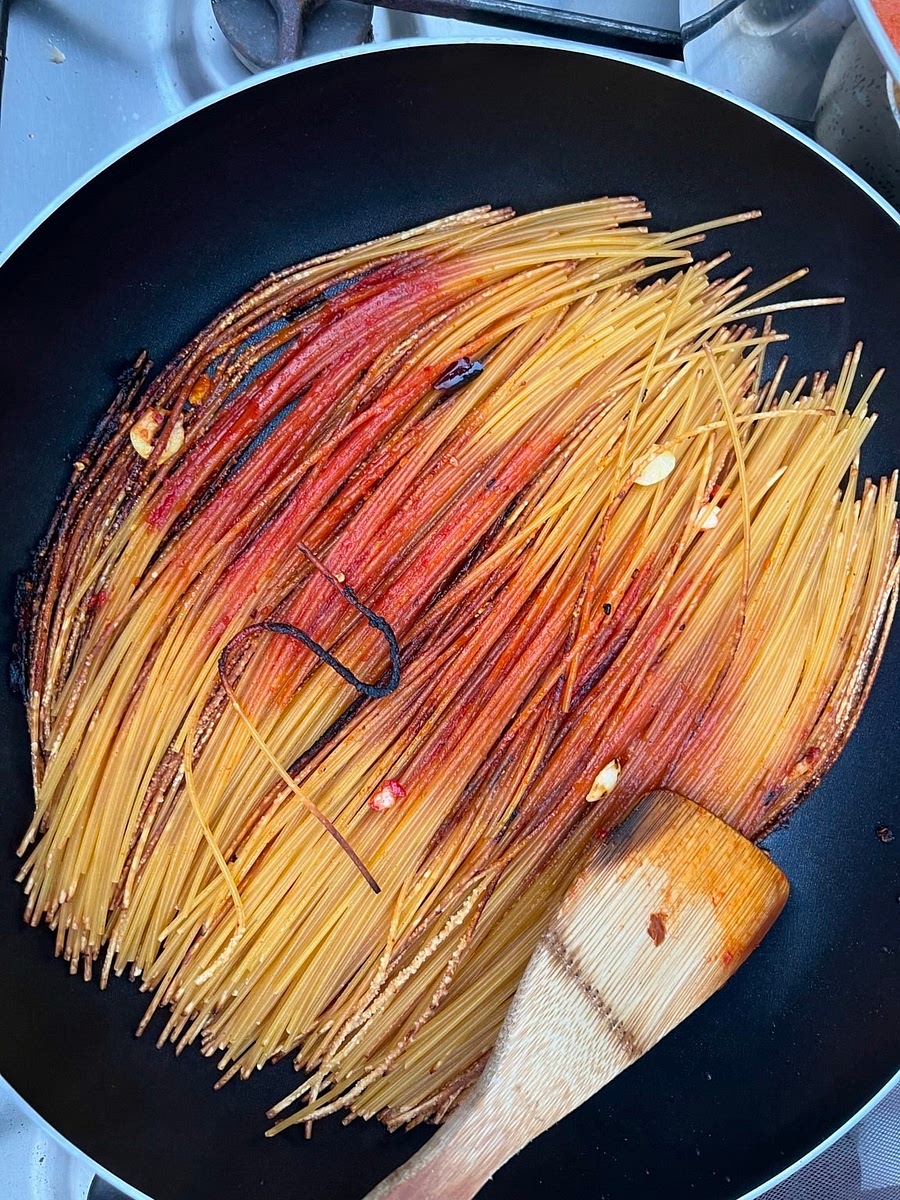
About the frying pan: The pan must be large enough to accommodate the full length of the spaghetti lying flat and spread out. Snapping the spaghetti to fit your pan is a cop-out. If we had to choose between snapping the spaghetti or tolerating a slightly smaller plan at the start of the cooking until the spaghetti flexes enough to fit, we choose the latter!
Step 3
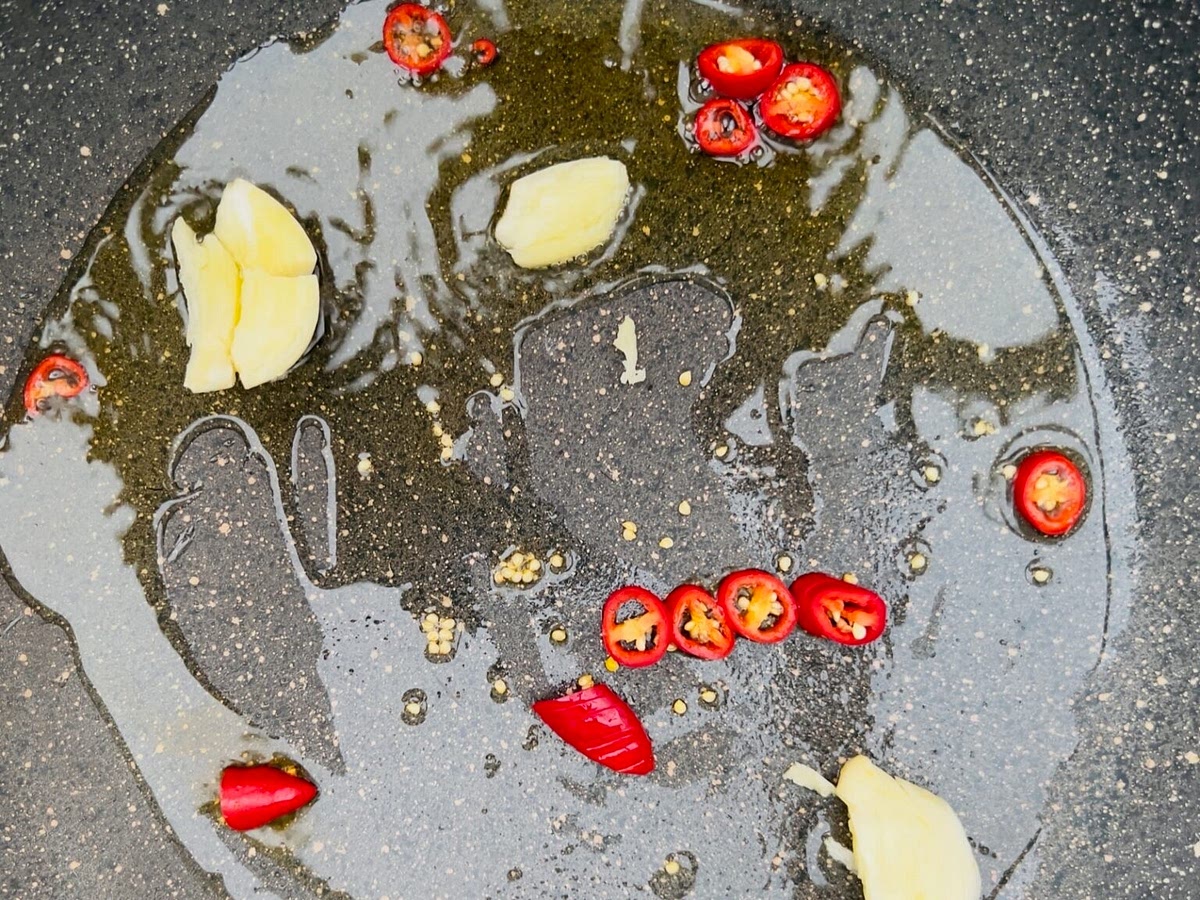
2. Pour a generous glug of extra virgin olive oil into the pan. Add 3 cloves of garlic slightly flattened and crushed using the flat of a kitchen knife, and the dried red pepper flakes (we used fresh chilli from our garden in this photo simply to use them up). If you are using ‘Nduja instead, add this now. Heat over a high heat until the garlic sizzles, but don’t let it burn and get bitter.
Step 4

3. Drop the dry spaghetti in the pan and spread into an even layer. Squeeze the remaining tomato concentrate on top of the spaghetti.The first step is to step back. Let the pasta callus, blister and blacken slightly before flipping it over to do the same on the other side. Use your ears and nose. Listen for the sizzle and smell the smokiness.
Step 5
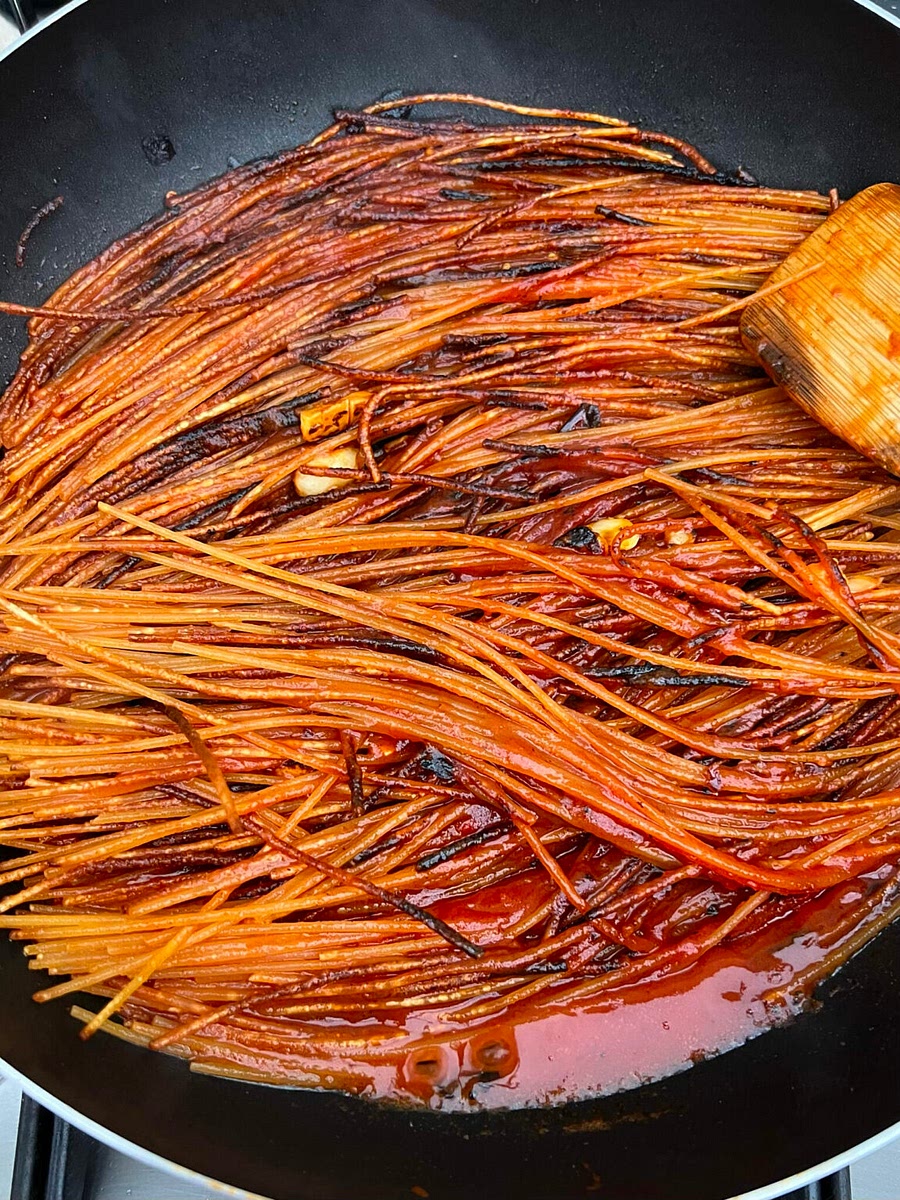
4. When the pasta has blistered and slightly burned on both sides, pour the passata into the pan. Add a little sugar if you are worried about the dish turning bitter. The passata will sizzle and start to simmer. Let it reduce without turning the spaghetti and listen carefully for the boiling point. When you hear it sizzle again (the noise changes sharply) remain patient and wait for sauce to start to catch on the base of the pan (this will take 30 seconds to 1 one minute). When it does, leave it for another 30 seconds or a minute. Then flip the spaghetti over, and leave it to catch on the base of the pan again (another minute or so).
Step 6

5. At this point the pasta can be stirred slightly. It should remain quite stiff. Pour 2 medium-sized ladles of the tomato broth over the pasta. Once again, stand back. Let it reduce without turning the spaghetti and listen carefully for the boiling point. When you hear it sizzle again (the noise changes sharply) remain patient and wait for the burning process to continue (this will take 30 seconds to 1 one minute). Repeat, stirring to remove the burnt spaghetti from the bottom of the pan while adding more tomato broth. Each addition must correspond to the time needed for it to sizzle and then repeat by soaking the pasta with the broth. The stiff spaghetti will soon start to soften. The spaghetti must “be killed”, letting it catch and burn.
Step 7
The pasta shouldn’t swell as it does when boiled. But it should be cooked through until the spaghetti is al dente, which usually takes us some 15 minutes from the first ladles of the tomato broth. You may need to add some more olive oil to the spaghetti to help it on its way. Clumps of burned pasta can be separated by stirring and turning the pasta.
Step 8
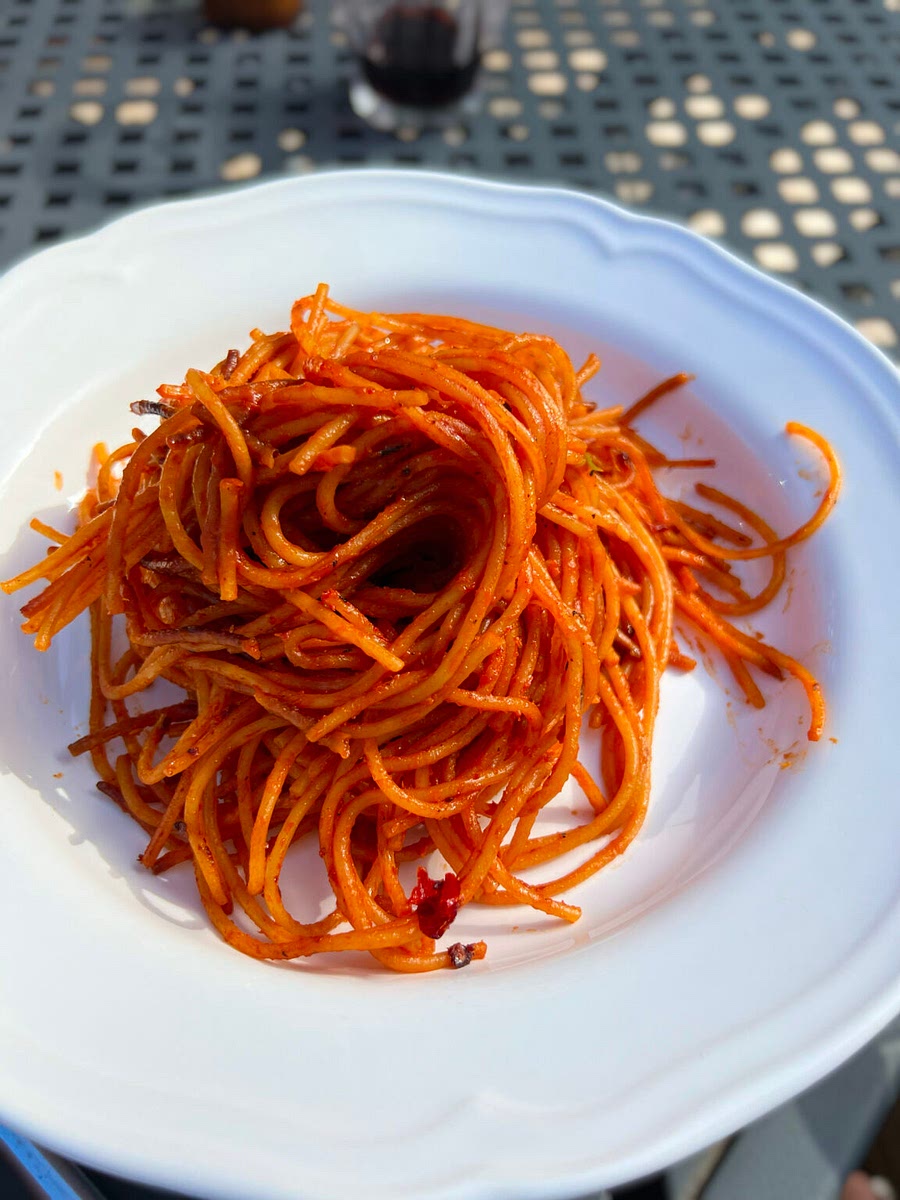
Serve immediately, while hot and fiery. Drizzle with some olive oil for extra pepperiness.
View on puglia Guys
↑Support creators by visiting their site 😊
Notes
1 liked
0 disliked
There are no notes yet. Be the first to share your experience!



